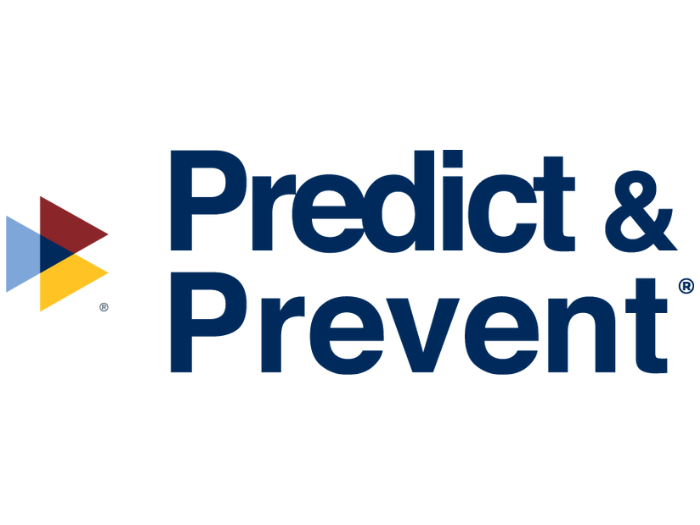Research
Best's Review Looks at How New Technology Helps Prevent Workplace Injuries as Claims Frequency Declines
In its November issue, Best’s Review examines how technology is helping to create a safer workplace.
Workers’ compensation insurers say their insureds are using smart cameras and taking a hands-on approach to loss control to prevent accidents at job sites. The insurers, meanwhile, are using AI to improve service. Although workers’ compensation insurers have been seeing a decline in claims frequency as this new technology helps reduce losses, insurers say claims severity has been increasing. Read more here.
Best’s Review is AM Best’s monthly insurance magazine, covering emerging issues and trends and evaluating their impact on the marketplace. Access it here

NEW ATRI RESEARCH TO STUDY RISING COMMERCIAL AUTO INSURANCE COSTS, RISK MANAGEMENT STRATEGIES
The American Transportation Research Institute (ATRI) is seeking motor carriers to participate in research on rising insurance costs and strategies for managing risk.
Trucking auto liability premiums rose by 36 percent per mile in the past 8 years amid persistent unprofitability for insurers, even as truck crashes declined over the past 4 years. In 2025, insurance cost/availability and lawsuit abuse, a primary contributor to rising insurance costs, were voted as the third- and second-greatest issues facing the trucking industry respectively.
In response to this financial pressure, fleets are reevaluating their total cost of risk by pursuing a variety of new technologies, training protocols, and insurance schemes, such as self-insurance or captives. Prior ATRI research detailed how fleets reduced coverage and raised deductibles from 2018 to 2020 in search of savings, self-incentivizing safety improvements but still experiencing higher premiums.
ATRI's Research Advisory Committee (RAC) identified expanding upon this prior research as a top priority in order to better understand and assess industry-wide trends in the ongoing adoption and effectiveness of these strategies.
Motor carriers are requested to submit data on their coverage stacks for the years 2021 through 2024, in addition to information on their use of safety technology and alternative insurance arrangements. All data is kept completely confidential for analysis in aggregate form only, and ATRI will sign non-disclosure agreements as desired.
AI in Insurance

PwC: Insurance Execs Say Agentic AI Leading Industry Transformation
More than half of insurance executives say generative and agentic artificial intelligence are the technological investments that will have the most transformative impact on the industry over the next three years, according to PwC.
The professional services firm noted in a recent report that 54% of 136 surveyed insurance execs view AI as most poised to reshape the industry during that period. This was 22 points higher than the next most popular option.
InsurTech/M&A/Finance💰/Collaboration

Dallas-Based Auto Loan Payoff Fintech EPIC Raises $10M Series A » Dallas Innovates
EPIC, which calls itself "the loan payoff clearinghouse for the automotive ecosystem," said the funding will support continued market expansion and platform innovation.
Dallas-based auto industry financial technology company EPIC has raised $10 million in Series A funding in a round led by FM Capital, with participation from Automotive Ventures and other strategic industry investors.
EPIC, which calls itself “the loan payoff clearinghouse for the automotive ecosystem,” said the funding will support continued market expansion and platform innovation.
“This funding lets us reach more partners and further improve how dealers, lenders, and insurers manage loan payoffs and title releases,” EPIC Brandon Hall said in a statement. “Faster, more efficient processing helps our partners save time, reduce errors, and boost profit opportunities.”
Legacy processes for loan payoffs and title releases create friction, delay, and financial risk for the automotive industry. EPIC says it replaces that with a modern financial infrastructure—a secure, digital clearinghouse that streamlines every step, from payoff quote to title release.
“EPIC is eliminating one of the industry’s most stubborn bottlenecks,” *Chase Fraser, managing partner at FM Capital, said in a statement. “Its digital network for loan payoff and title release replaces outdated manual processes with the speed and precision today’s automotive ecosystem demands.”
Steve Greenfield, general partner of Automotive Ventures, said the platform helps solves issues that cost time and money.
“Our investment in EPIC reflects a shared vision to digitize a key segment of the automotive transaction process that has been unsolved,” Greenfield said. “The EPIC platform reduces errors, saves time, and moves the industry toward a unified, digital workflow, saving dealerships thousands every month in holding and processing costs.”
EPIC partners with automotive dealers, vehicle lenders, and automobile insurers across the nation to help them drive efficiency and improve overall profitability.
Commentary/Opinion

A new ‘pair of eyes’ for the insurer of the future - Matteo Carbone
Video recognition has become an essential capability across P&C lines, by turning passive footage into real-time, auditable signals that help reduce loss, accelerate claims and reinvent prevention
For a decade, players in the insurance arena have proven the value of insurance IoT that uses specialised sensors, such as auto telematics, water and electrical fire mitigation, wearables and industrial monitoring. Their use has already shown its effectiveness in impacting core insurance processes, enhancing the customer experience, developing new business opportunities and improving sustainability in multiple insurance business lines.
Video recognition extends that paradigm, transforming cameras into the most versatile “sensor” that feed edge or cloud models – detecting objects, behaviours and events in real time, and triggering action, not just recording for later review. The core promise is threefold: prevent incidents (“connect and protect”), match rate to risk with richer behavioural evidence, and compress the claims cycle through objective video-backed adjudication.
The IoT Insurance Observatory recently published a paper, Video Recognition: A Necessary AI Capability for the Insurer of the Future which provides a crisp, practitioner-oriented argument for why camera-based AI has moved from an interesting pilot to an essential capability across P&C lines.
By Matteo Carbone, founder, The IoT Insurance Observatory, co-founder of VDocet and Chairman of Net Insurance’s Innovation Advisory Board
Financial Results
Swiss Re AG (SSREF) Q3 2025 Earnings Call Highlights: Strong Net
Swiss Re AG (SSREF) reports robust net income and investment returns, despite a decline in insurance revenue and challenges in Life and Health portfolios.
Summary
- Net Income: $4 billion for the first nine months of 2025.
- Annualized Return on Equity: 22.5%.
- Insurance Revenue: $32 billion for the first nine months, down from $33.7 billion last year.
- P&C RE Combined Ratio: 71.3% in Q3, 77.6% for the first nine months.
- Corporate Solutions Combined Ratio: 87.1% for the first nine months.
- Life and Health RE Net Income: $1.1 billion for the first nine months.
- New Business CSM: $3.9 billion for the first nine months, down from $4.2 billion last year.
- Return on Investment: 4.1% for the first nine months, up from 3.9% last year.
- SST Ratio: Estimated at 268% as of October 1, 2025.
Cyber Risk
Research Report Shows Cyber Insurance Growing 15% in 2026 on AI And Data Threats
Written cyber insurance premiums will rise 15% in 2026 as new artificial intelligence threats and data demands emerge.
In a new report, analysts at Forrester Research anticipate that the widespread adoption of AI will reverse the cyber market’s recent deceleration. When asked why, Rohit Makhijani, a principal analyst at Forrester, said that implementing AI increases threat surface area.
Awards

Predict & Prevent® Podcast 25: From Insurance Payer to Prevention Partner
[Ed. Note: I was honored to have served on the judging panel and select the AXA solution for International Insurance Society’s 2025 Global Innovation Award for Predict & Prevent which was awarded at the IIS Global Insurance Forum Oct. 26-27 in Rüschlikon, Switzerland].
"AXA says insurers must evolve from claim payers to risk prevention partners to remain viable as modern threats become more complex and interconnected.
As climate disasters, cyberattacks, and geopolitical instability increasingly intersect, traditional insurance models are reaching their limits. AXA is shifting from simply paying claims after disasters to actively helping to prevent losses before they happen.
Pierre du Rostu, CEO of the AXA Digital Commercial Platform, recently discussed his team’s platform with Pete Miller, CEO of The Institutes and host of the Predict & Prevent® podcast.
The AXA Digital Commercial Platform is the winner of the International Insurance Society’s 2025 Global Innovation Award for Predict & Prevent, which was awarded at the IIS Global Insurance Forum, Oct. 26-27 in Rüschlikon, Switzerland.
On the podcast du Rostu and Miller explored how technology is transforming insurance from reactive payer to proactive partner.
The AXA Digital Commercial Platform combines AI, IoT sensors, real-time satellite data, and risk management expertise into what du Rostu calls “a one-stop-shop risk management solution.”
ITC BRIEFINGS
ITC Briefing: CLARA Analytics Puts Responsible AI to Work in Claims | Insurance Innovation Reporter
CEO Heather H. Wilson says explainable AI is turning adjusters into “superheroes” and delivering measurable ROI.
At ITC Las Vegas, CLARA Analytics (Santa Clara, Calif.) presented a clear message about the role of artificial intelligence in claims: augmentation, not automation.
“We’re not trying to replace adjusters—we’re trying to make them superheroes,” says Heather H. Wilson, CEO. “Our goal is to help them focus on judgment, empathy, and service, while AI handles the pattern recognition.”
Wilson describes CLARA as an AI-first enterprise analytics company built to help insurers achieve better outcomes through human-centered intelligence. Its platform synthesizes structured and unstructured data to guide adjusters toward the right decisions faster and with more confidence.
CLARA’s platform has evolved from specialized models into a unified AI ecosystem. The suite includes CLARA Triage, CLARA Litigation, CLARA Treatment, and CLARA Optics—all integrated through a shared data layer and conversational interface. “We’re moving from predictive to prescriptive,” says Chief Product Officer Mubbin Rabbani. “The focus now is connecting the dots so the adjuster gets a unified story—not ten dashboards.”
ITC Briefing: Carpe Data’s Scot Barton on Speed, Scale, and Smarter Claims | Insurance Innovation Reporter
The data innovator’s Chief Product Officer discusses fraud detection, automation, and AI’s growing role in property/casualty insurance.
For Carpe Data (Santa Barbara, Calif.), the watchwords remain speed and scale. “Our speed-scale story is still what gets the most attention,” says Scot Barton, Chief Product Officer, Carpe Data. “AI is enabling fraudsters more than ever to do whatever they want to do. The proliferation of it is going to be worse, not better, so we’re still there at speed and scale.”
Barton says insurers are finally beginning to understand how Carpe Data’s claims-fraud solutions identify questionable claimants without bias or manual review. “People are shocked when their severity goes up, but they’re not doing the due diligence to look at every single claimant with an unbiased perspective,” he notes. “That’s something we’ve been doing for a while, but it’s still shocking how many people don’t care or don’t know.”
The company recently introduced a new product, Investigative Reports, which Barton calls “the one-two punch.” Once the system flags potential anomalies, carriers can order a deeper-dive report through the same platform. “Once I’ve given the breadcrumb that there might be something here, you need a deeper dive report,” he says. “That’s a capability we’ve launched just this year that’s pretty exciting.”

ITC Briefing: ResourcePro Blends Insight and Execution for Modernization Success
ResourcePro pairs industry intelligence with tech-enabled execution to help insurers capture real value from AI and modernization.
ResourcePro (New York) is evolving from its roots in business-process services into a tech-enabled transformation partner, helping insurers and distribution organizations modernize operations and unlock the full value of automation and AI.
“Clients are asking us to help with transformation, not just tasks,” says Paul Naquin, SVP and General Manager, Technology Services, ResourcePro. “They want impact—real productivity gains, improved service, better growth outcomes—and we’re delivering that through a combination of technology, process, and data expertise.”
Naquin joined ResourcePro earlier this year after advising the leadership team and private-equity owner Kelso (New York). His experience running large-scale technology organizations at Accenture, Capgemini, and NTT Data shapes what he calls a “credible execution engine” behind modernization strategy. “What’s missing for many organizations isn’t ideas,” he says. “It’s the ability to operationalize them at speed and scale.”

ITC Briefing: EY’s Chris Raimondo on Insurers’ Enterprise Turn Toward AI | Insurance Innovation Reporter
The consulting leader says carriers are moving from experimentation to enterprise-scale adoption while balancing risk, resilience, and modernization priorities.
Chris Raimondo, EY Americas Consulting Insurance Leader (New York), says that insurers have entered a new phase in their AI journey—one marked by greater confidence and enterprise integration.
“If I think back to when we were first here two years ago, the emphasis was on education and experimentation,” Raimondo explains. “Now our clients are thinking about enterprise: what do we need to really be able to implement and maintain at scale?”
Raimondo, who leads EY’s insurance consulting business, has deep roots in insurance technology. He was a founding member of EY’s Guidewire Alliance and previously worked at BearingPoint.
“Technology has become the backbone of our insurance sector business.”
